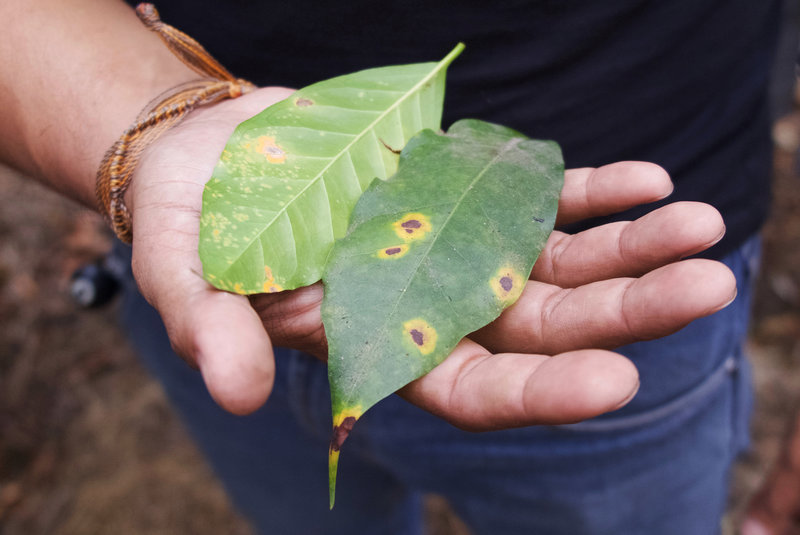Five years ago, Finca El Valle, a small, family-run coffee farm south of Antigua, Guatemala, was producing 140,000 pounds of superior-quality Arabica for a select handful of America’s premier specialty-coffee roasters.
An outbreak of coffee leaf rust, caused by the fungus Hemileia vastatrix, hit the celebrated coffee-producing region in 2012, and by 2014 it had infected the entire farm. That year El Valle harvested a meager 28,000 pounds of coffee, an 80 percent drop. The next harvests were even smaller. With the lowest coffee prices in a dozen years, reviving the farm has been deeply challenging.
“We are in the middle of the biggest coffee crisis of our time,” said the Guatemalan producer and exporter Josué Morales, who works with over 1,300 growers.
Central America, where smallholders with less than 7.5 acres of land produce 80 percent of the region’s coffee, has been particularly hard hit by rust. Some 70 percent of the farms have been affected, and over 1.7 million coffee workers have lost their jobs. Many are leaving the coffee lands to find work elsewhere.
“The problem is not just the rust; it’s the rust and catastrophically low coffee prices,” says Stuart McCook, author of the upcoming Coffee is Not Forever: A Global History of the Coffee Rust. “It’s difficult for farmers to weather both.”
For observers of coffee history such as McCook there are strong parallels to another outbreak.
In 1869, Sri Lanka (then known as Ceylon) was one of the world’s largest coffee producers, exporting over 100 million pounds annually. A new railway connected the coffee-producing center with the coast, a steady flow of cheap labor was coming from South India, and market prices were high. With a growing global demand for coffee, the future of the island’s principle industry seemed assured.

